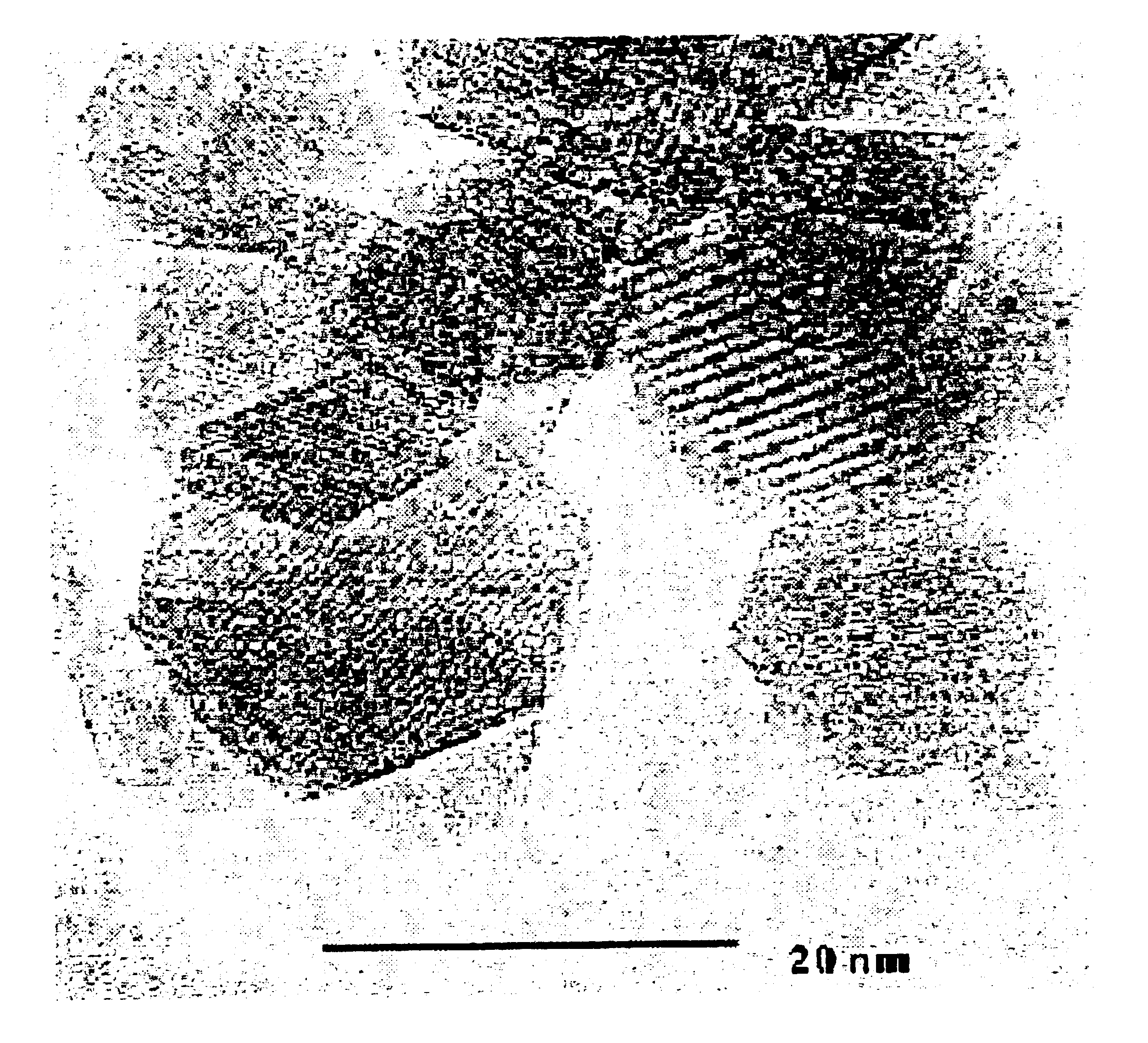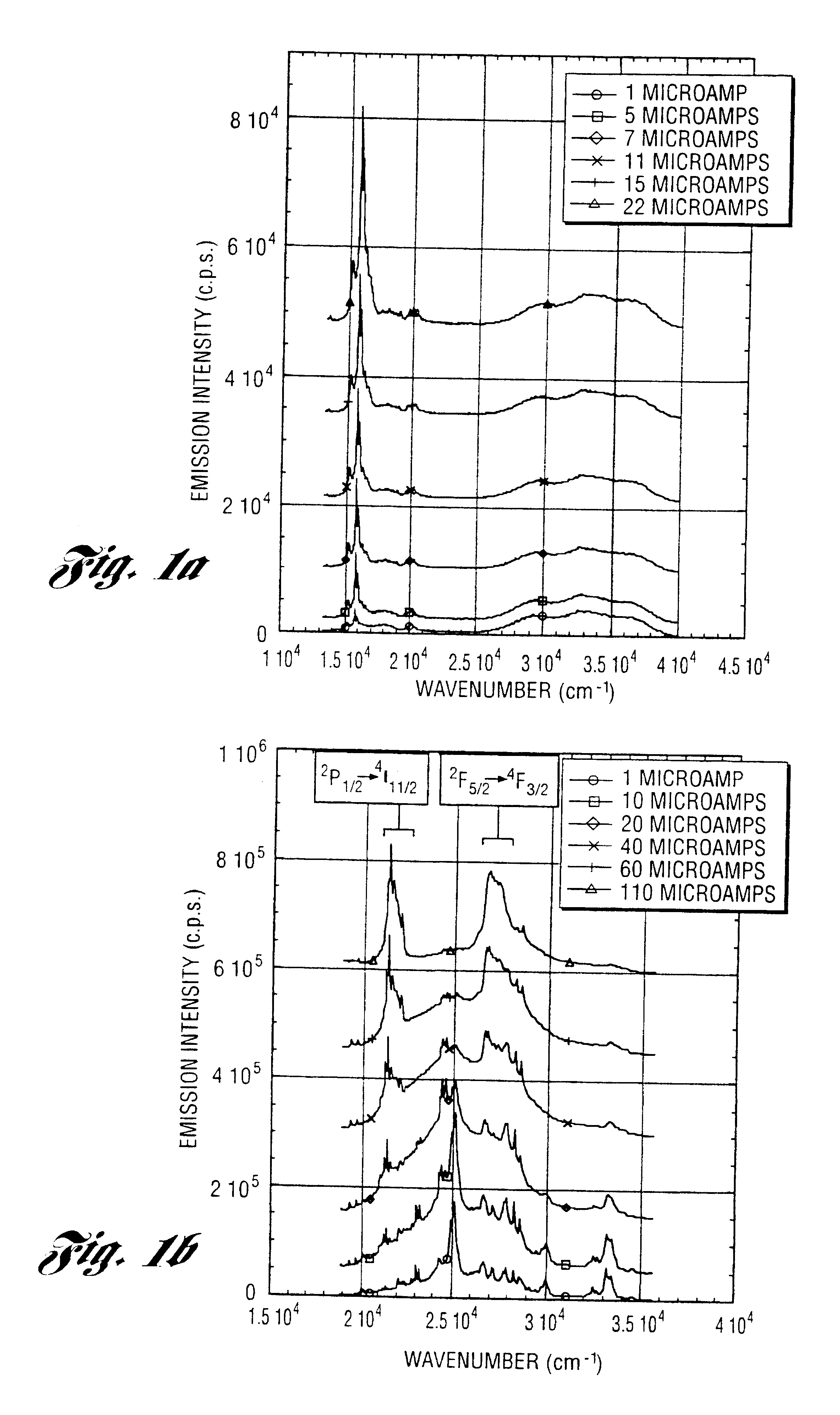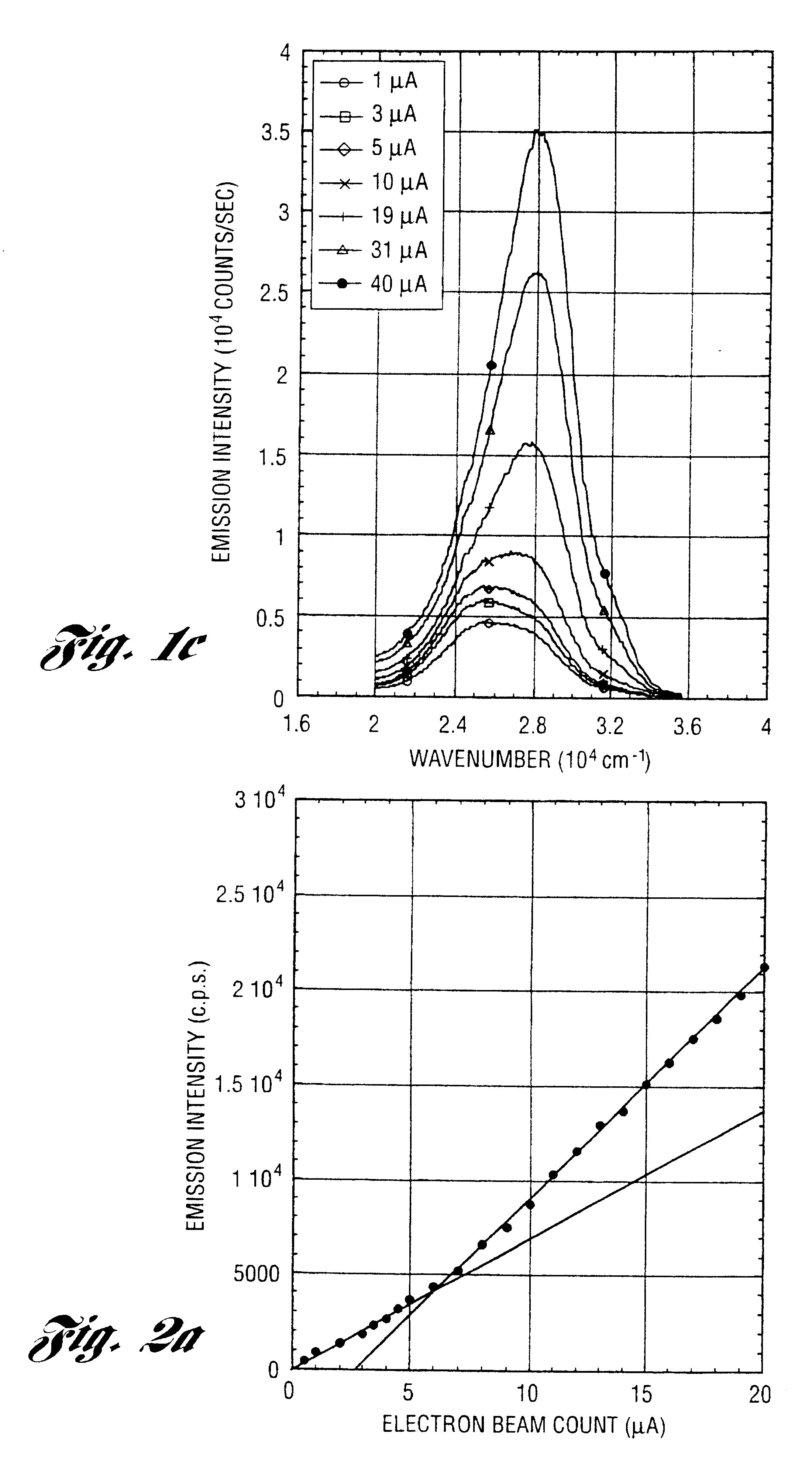Ultrafine powders and their use as lasing media
- Summary
- Abstract
- Description
- Claims
- Application Information
AI Technical Summary
Benefits of technology
Problems solved by technology
Method used
Image
Examples
example 1
In a 2 L round bottom flask, 199.9 g (2.190 mol) of Al (OH).sub.3.0.72H.sub.2 O, 326.7 g (2.190 mol) triethanolamine (TEA) and 1 L ethylene glycol (EG) are mixed with constant stirring (magnetic). The reaction is heated to .apprxeq.200.degree. C. to distill off EG and byproduct water. After .about.2 h, the reaction turns clear, indicating that formation of a soluble [Al(TEA)].sub.3 complex is complete. Then, 13.71 g (0.343 mol) of NaOH and 2.84 g (0.068 mol) of LiOH.H.sub.2 O are added, and the reaction is refluxed for 1 h. The metal molar ratio used (Na:Al:Li=1.67:10.67:0.33) represents the previously determined optimum doping level. The reaction is then distilled under N.sub.2, first to remove by-product water then excess EG, until the residue is too viscous to stir. On cooling, a glassy, orange / yellow solid is recovered from the flask and diluted with EtOH to create a 1-8 wt % residual ceramic solution. To this solution between 0.975 g (0.0022 mol) and 0222 g (0.0005 mol) of thul...
example 2
Aluminum tri-sec-butoxide (Aldrich) was purified by distillation under vacuum. In a N.sub.2 Dri-Box, the purified aluminum tri-sec-butoxide, 250 g (1.015 mol) was slowly added to a stirred mixture to 155 g (1.039 mol) triethanolamine and 250 ml isopropanol. Within 2 h, the triethanolamine displaces the sec-butanol to form an air and water stable alumatrane. The resultant alumatrane in sec-butanol and isopropanol was diluted with. ethanol to create a 2 wt % residual ceramic solution. To this solution 0.250 g (0.0006 mol) of cerium nitrate hexahydrate or 0.250 g (0.0006 mol) of gadolinium nitrate hexahydrate or 0.250 g (0.0006 mol) of neodymium nitrate hexahydrate or 0.250 g (0.0006 mol) of holmium nitrate pentahydrate or 0.250 g (0.0006 mol) of europium nitrate pentahydrate or 0.250 g (0.0006 mol) of terbium nitrate pentahydrate or 0.250 g (0.0006 mol) of thulium nitrate pentahydrate was added. This is equivalent to 1000 ppm dopant level. The doped solution was converted to an ultraf...
example 3
Particles of .delta.- (or .beta."-) alumina were synthesized by flame spray pyrolysis of metallo-organic precursors, and a dopant level of 1000.+-.100 ppm Ce.sup.3+ (or Pr.sup.3+) ions was easily achieved. An alumatrane (N(CH.sub.2 CH.sub.2 O).sub.3 Al) precursor was used, consisting of alumatrane, 2 wt % Al.sub.2 O.sub.3 and 0.003% CeO.sub.2 or PrO.sub.2 in ethanol, and produced powders by combustion A. C. Sutorik, S. S. Neo, T. flinklin, R. Baranwal, D. R. Treadwell, R. Narayanan, and R. M. Laine, J. Am. Ceran. Soc. 81, 1477-1488 (1998); R. M. Laine, K. Waldner, C. Bickmore, D. Treadwell, U.S. Pat. No. 5,614,596 (March 1997) at a rate of 50 g / hr. Particle sizes and concentrations were estimated using BET S. Brunauer, P. H. Emmett, and E. Teller, J. Am. Chem. Soc. 60, 309(1938) surface areas (79.5.+-.1 and 43.2.+-.0.2 m.sup.2 / g for Ce and Pr) and x-ray line-broadening. The unaggregated, single crystal nature of the particles was confirmed by transmission electron microscopy. Dopan...
PUM
| Property | Measurement | Unit |
|---|---|---|
| Angle | aaaaa | aaaaa |
| Particle size | aaaaa | aaaaa |
| Particle size | aaaaa | aaaaa |
Abstract
Description
Claims
Application Information
 Login to View More
Login to View More - R&D
- Intellectual Property
- Life Sciences
- Materials
- Tech Scout
- Unparalleled Data Quality
- Higher Quality Content
- 60% Fewer Hallucinations
Browse by: Latest US Patents, China's latest patents, Technical Efficacy Thesaurus, Application Domain, Technology Topic, Popular Technical Reports.
© 2025 PatSnap. All rights reserved.Legal|Privacy policy|Modern Slavery Act Transparency Statement|Sitemap|About US| Contact US: help@patsnap.com



